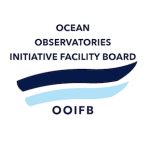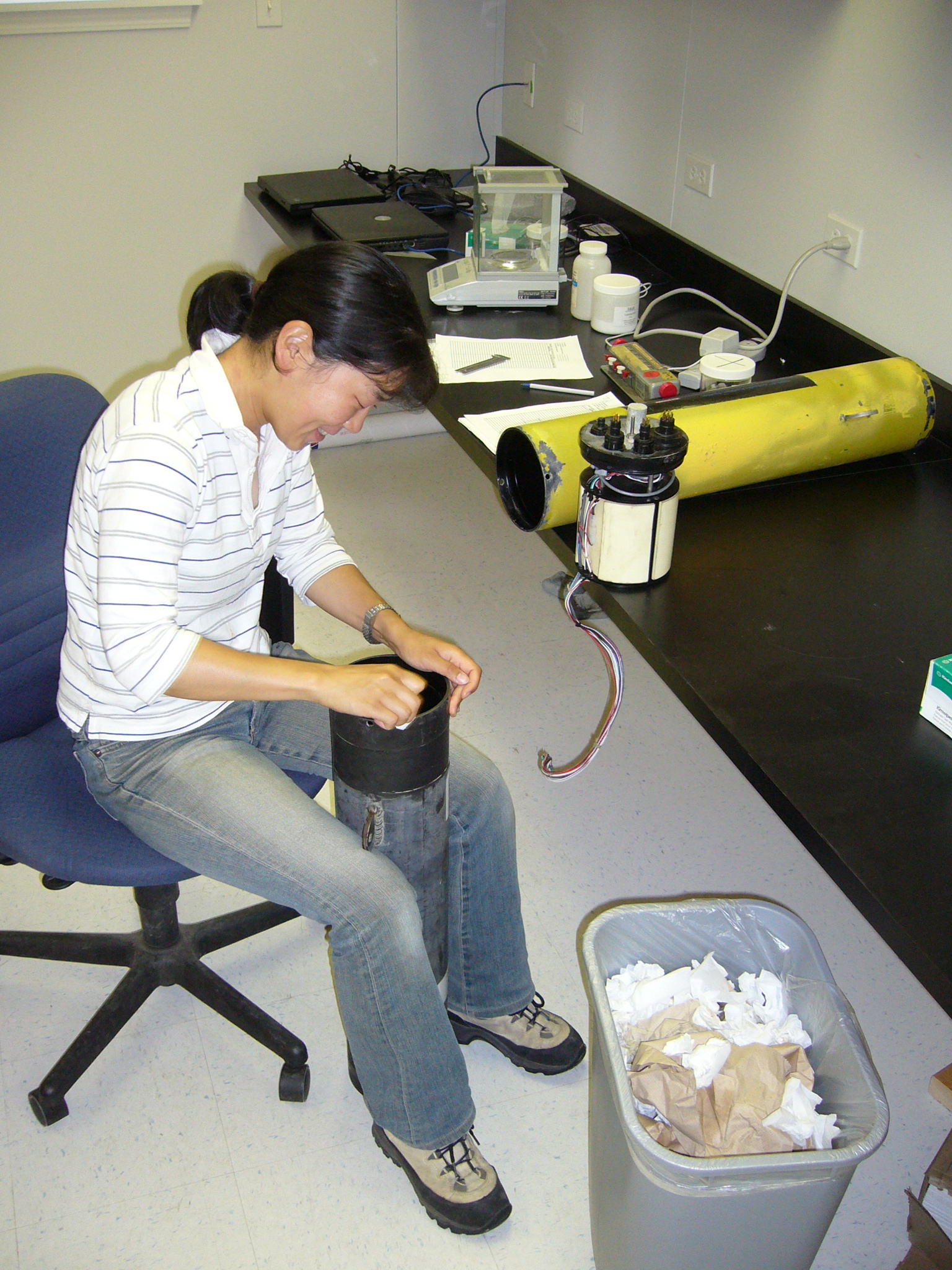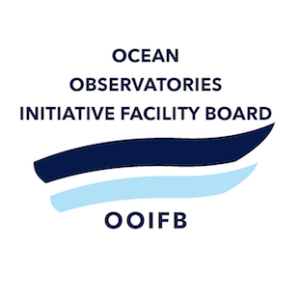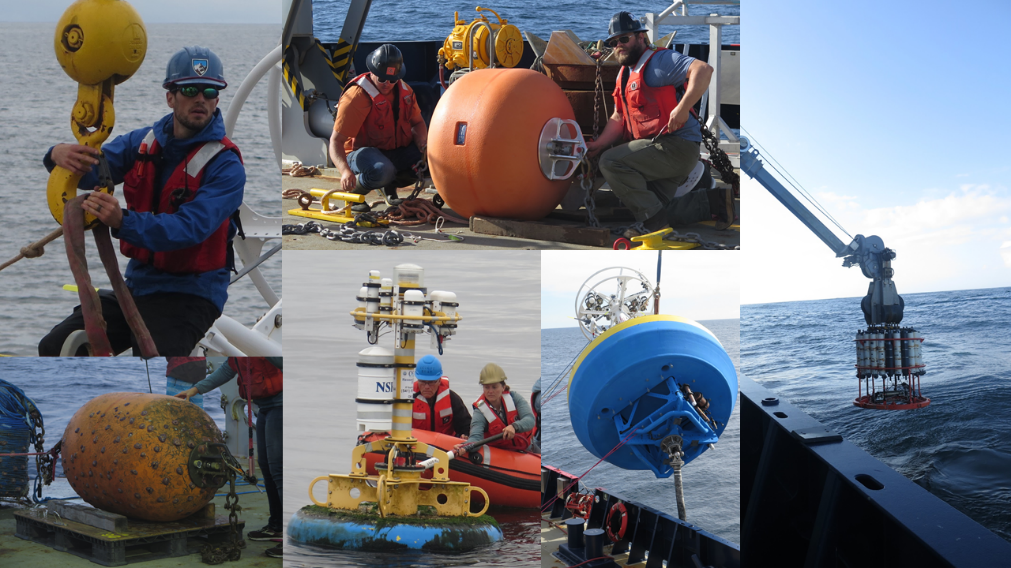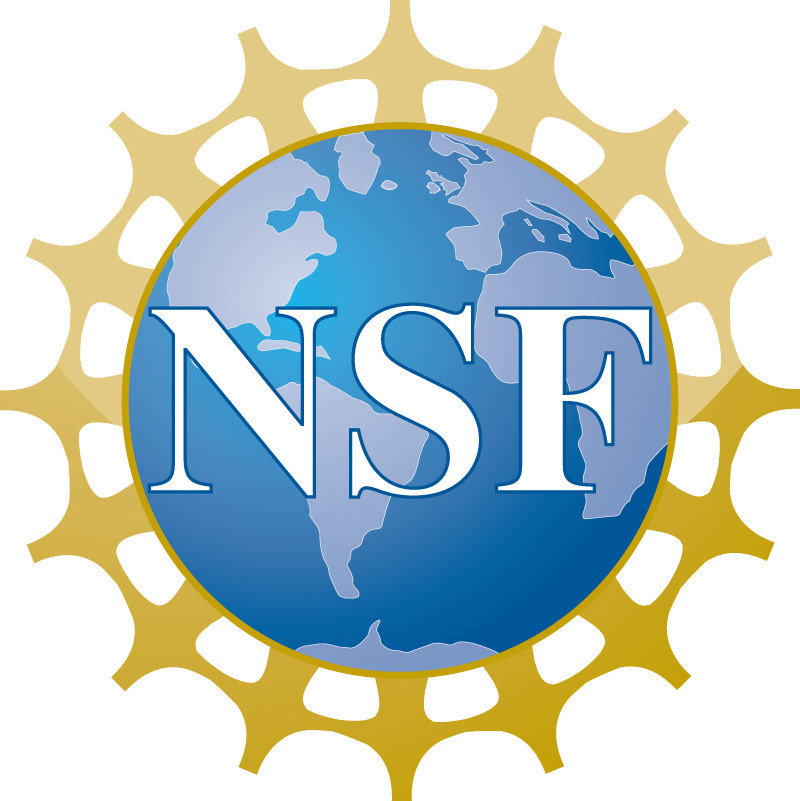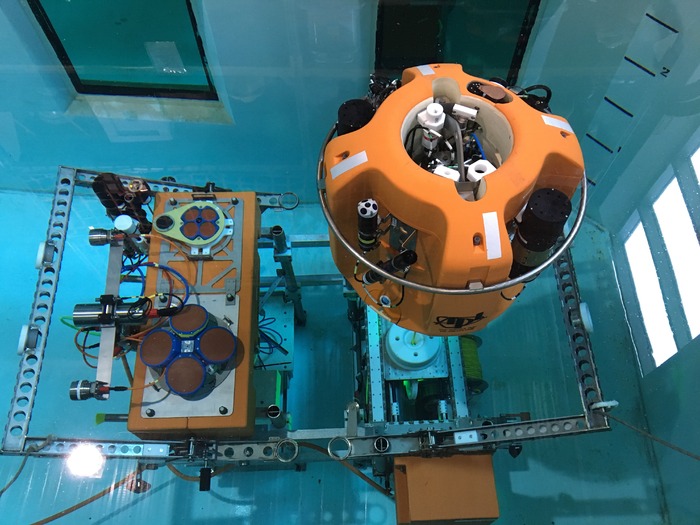Program Updates
NE Pacific OOI Community Workshop, 23-25 June: Applications by 5 April
The Ocean Observatories Initiative Facility Board (OOIFB) will host a workshop focusing on current and future science addressed by the OOI infrastructure in the northeast Pacific. The workshop is aimed at researchers and resource managers who are using or are considering using OOI data, researchers interested in adding instrumentation to the OOI infrastructure, and educators at all levels interested in OOI’s Cabled, Endurance, and Station Papa Arrays.
The workshop will inform the oceanographic community of the science capabilities and new technologies offered by the OOI and other observatory arrays located in the northeast Pacific. An overview of OOI data products, user interfaces, and system features will be provided along with hands-on demonstrations using a suite of data access tools. OOI Program team members and NSF representatives will be on hand to answer questions and provide information on OOI operations.
This community workshop will provide a forum to facilitate science collaborations and identify strategies for engaging future users of OOI. Workshop participants will have the opportunity to provide feedback on their experiences in working with the OOI systems and data.
The workshop will be held at the OSU Portland Center in Portland, OR on June 23-25, 2020. To apply for the workshop, please complete the on-line application form. Travel support is available, but limited. Broad representation from institutional, geographic, and disciplinary groups is desired and will be considered in participant selection. The deadline for applications is April 5, 2020.
To apply, click here.
Participation by Web Conference will be offered
Please note if you are unavailable to attend this workshop, participation by web-conference will also be possible. Individuals interested in participating virtually are encouraged to complete the on-line application form. This will help us to better understand our participant interests.
Special note: Although we plan to hold the workshop on June 23-25 in Portland, OR, we will continue to monitor news and guidance regarding the Coronavirus (COVID-19) outbreak. Plans for the workshop will be adjusted as needed in consideration of any Center for Disease Control guidance in the coming weeks.
Additional details about the workshop are available here.
Read More
OOI Facility Board Position Open; Application Deadline 20 March 2020
The Ocean Observatories Initiative Facility Board (OOIFB) is soliciting applications to fill one membership position that is currently open. Scientists with experience using scientific observing systems such as OOI are encouraged to apply.
The OOIFB was created in 2017 to provide independent input and guidance regarding the management and operation of the National Science Foundation-funded Ocean Observatories Initiative (OOI). The OOIFB provides a way to expand scientific and public awareness of OOI, and ensure that the oceanographic community is kept informed of developments of OOI.
The responsibilities of the OOIFB may include, but are not limited to, the following:
- Serving as the prime scientific and technical conduit between the oceanographic community and NSF regarding OOI.
- Examining the accomplishments and work flow of the OOI Operator, in order to provide feedback regarding the OOI Annual Work Plans.
- Via workshops, community meetings, and/or other mechanisms, stimulate and engage the user community in keeping the accomplishments of the OOI at the cutting edge of scientific inquiry and technological innovation.
- Developing and implementing strategies to expand scientific and public awareness of the unique scientific and technological opportunities of the OOI.
Facility Board terms of office are three years, with the possibility of re-appointment for a second three-year term. We anticipate up to two in-person meetings per year and one teleconference per month.
Applications should be submitted to Annette DeSilva, at the OOIFB Administrative Support Office, and must include a letter of interest and an academic CV. Applications are due by March 20, 2020. Applications will be reviewed by the OOIFB, who will give due consideration to the qualifications of applicants, as well as to maintenance of career level, disciplinary, and regional balance on the OOIFB.
For more information about OOIFB and its activities, please visit OOIFB’s website or contact Kendra Daly, OOIFB Chair or read the OOIFB Charter.
Read More
Graduate Student Cruise Opportunities
Opportunities abound for graduate students to have hands-on experience aboard the OOI deployment expeditions in 2020. The first opportunity is during the spring Endurance Array deployment aboard the R/V Sikuliaq. as part of the UNOLS Cruise Opportunity Program. The Endurance cruise will run from 31 March-15 April 2020, departing from and returning to Newport, Oregon. Applications to UNOLS are due by 28 February 2020.
Students currently completing (or who have recently completed) a degree in a field of oceanographic research are eligible to apply. Those selected will learn about the functional aspects of seagoing work, while helping to deploy and recover oceanographic moorings, profilers, and gliders off the Washington and Oregon coast. Students also will assist in CTD (conductivity, temperature, depth) casts and acquisition of data while underway. Other specific assignments can be developed based on students’ expertise and interests.
To learn more and to apply for the Spring 2020 Endurance Array cruise, visit UNOL’s Cruise Opportunity Program. Other OOI array deployment cruises are being planned for the fall, so stayed tuned for more exciting opportunities later this year.
Read MoreOpportunity to provide feedback on OOI Data Delivery Systems
We need your help evaluating Ocean Observatories Initiative (OOI) data delivery systems and to assess the extent to which they meet the needs of the user community. The information we gather through this survey will be used to improve the current OOI data delivery systems and perhaps develop other systems that better meet the needs of users. We want to know what you think of the OOI data delivery systems and how they could be improved for users.
The survey should only take about 15 minutes to complete. Your participation is voluntary and your responses are anonymous. Click here for the OOI Data survey
Please complete the survey by April 26th. This survey is being conducted by the NSF’s OOI Facility Board’s Data Dissemination and Cyber Infrastructure (DDCI) Committee. If you have any questions, please contact Tim Crone.
Thank you very much for your time and feedback.
Regards,
Tim Crone, DDCI Committee Chair & Larry Atkinson, OOIFB Chair
Endurance Array Fall 2018 cruise data available through OOI Data Portal
Endurance Array Fall 2018 cruise data available through OOI Data Portal
[media-caption type="image" path="https://oceanobservatories.org/wp-content/uploads/2019/01/IMG_1853.jpg" link="#"]The shelf and offshore Washington buoys on the back deck of the R/V Sally Ride. Photo Credit: Zoë Philby[/media-caption]The Fall 2018 Endurance Array cruise on the R/V Sally Ride departed Seattle, Washington on September 16 and completed in Newport, Oregon on September 30. All uncabled moorings were recovered and newly refurbished moorings deployed in their place. Telemetered science data from this deployment are being ingested and are available through OOI’s Data Portal. Data from instruments deployed in spring 2018 and recovered in Fall 2018 are also available through OOI’s Data Portal. As bottle data are analyzed, they are being posted to alfresco.oceanobservatories.org. The full cruise report is available at this URL.
Read MoreA Community Welcome from The OOI 2.0 Team
A Community Welcome from The OOI 2.0 Team
The Ocean Observatories Initiative team is excited about implementation of OOI 2.0 and advancing this community facility over the next five years. Phase two of OOI began October 1, 2018 following the award by the National Science Foundation of a cooperative agreement to Woods Hole Oceanographic Institution (WHOI) to host the Program Management Office. Operations and maintenance of observatory components remains as before with WHOI operating the Global sites and the Pioneer Array, the University of Washington (UW) operating the Regional Cabled Array, Oregon State University (OSU) operating the Endurance Array, and Rutgers, the State University of New Jersey operating the cyberinfrastructure that ingests and delivers data. One important change in OOI 2.0 is that the data assessment responsibilities, formerly at Rutgers, are now distributed among the marine operating institutions to provide better integration with the science and engineering teams, as OOI 2.0 puts renewed emphasis on data QA/QC and data access.
[media-caption type="image" path="https://oceanobservatories.org/wp-content/uploads/2019/01/PioneerSurfaceMooring-300x184.jpg" link="#"]Figure 1. The Multi-Function Node of a Pioneer Surface Mooring prepared for launch on the fantail of the R/V Armstrong. Pioneer Array moorings are recovered and replaced with refurbished components twice per year. (Photo credit: OOI CGSN)[/media-caption]The Global Array infrastructure deployments at the Irminger and Papa sites are ongoing – entering their 5th and 6th year of operation, respectively. OOI operations at the Irminger Sea Array are conducted in coordination with the NSF Overturning in the Subpolar North Atlantic Program (OSNAP), while OOI subsurface moorings and gliders at Papa are deployed in coordination with a surface mooring from NOAA’s Pacific Marine Environmental Laboratory. Deployments with reduced scope, consisting of a surface mooring only, are being conducted at the Southern Ocean Array in collaboration with the National Oceanography Centre (NOC), Southampton, UK. Operations at the Argentine Basin Array have been suspended. The Pioneer Array (Figure 1), serviced twice per year, is preparing for its 12th mooring service cruise. Several community PI projects have leveraged the Pioneer Array infrastructure, including the New England Shelf Long-Term Ecological Research (LTER) program. Observations from Pioneer, in conjunction with remote sensing and historical data, have highlighted new shelf-slope exchange mechanisms within a rapidly changing physical system with significant impacts on ecosystems.
[media-caption type="image" path="https://oceanobservatories.org/wp-content/uploads/2019/01/EnduranceArray-300x169.png" link="#"]Figure 2. The September 2018 Endurance Array cruise occurred during the transition to OOI 2.0. We recovered equipment deployed in March 2018, deployed newly refurbished equipment and continued delivering data to the OOI Data Portal. (Photo credit: OOI OSU)[/media-caption]The Endurance Array (Figure 2) includes moorings, profilers and gliders off Oregon and Washington. The infrastructure off Oregon is tied into the Regional Cabled Array at the shelf and offshore locations. The full scope of the Endurance Array was first deployed in April 2015, and we are preparing for our eleventh Endurance Array cruise in April-May 2019. Significant technical improvements have been made across the array based on system performance. Among the many improvements, we have updated sensors (Satlantic ISUS sensors replaced with SUNA) and improved bio-fouling mitigation (UV biofouling protection added to dissolved oxygen optodes). Notable successes on the Endurance Array include observations of seasonal hypoxia events at multiple locations using fixed time series, profilers, and gliders. There are also moored multi-spectral optical attenuation and absorption time series from fixed depths and from profilers. While the OOI data portal is the source of all Endurance Array data, to better serve the regional user community, some Endurance Array data is passed through other widely used access points. Near real-time Endurance buoy meteorological and surface data can be accessed through NDBC. Recent near real-time Endurance Array data can also be accessed through the regional IOOS site, nanoos.org. OOI glider data is also passed on to the IOOS Glider DAC.
[media-caption type="image" path="https://oceanobservatories.org/wp-content/uploads/2019/01/RegionalCabledArray-300x200.jpg" link="#"]Figure 3. The R/V Revelle fully loaded with the Regional Cabled Array infrastructure for installation during Leg 1 of the 2018 expedition. (Photo credit: OOI UW) [/media-caption]The Regional Cabled Array (Figure 3) is now in its 5th year of operation. As part of the OOI 2.0 transition, the UW partnered with Pacific Northwest Gigapop to operate the terrestrial west coast infrastructure, which included moving the Cabled Array and CI servers to Seattle from Portland, Oregon. In addition, the UW is now responsible for the port agent drivers and data parsers for Cabled Array Core and PI instruments. The CI Machine to Machine interface is now being routinely used by the community to access Cabled Array data, and compared to samples for verification. The OOI Cabled Array Core infrastructure is enhanced by the addition of 13 “PI” instruments with funding from the NSF, the Office of Navy Research and Germany. Newly installed PI instruments include two cabled multibeam sonars that are imaging all methane plumes issuing from the seeps at Southern Hydrate Ridge as well as a CTD-O2 sensor, two new geophysical sensors, the cabled COVIS multibeam sonar, as well as three uncabled thermistor arrays. The Shallow Profiler moorings continue to be work horses for the Cabled Array, having completed >30,000 profiles since 2015. During this next ~ six months, the Cabled Array team is working hard on platform and instrument refurbishment, and integration as testing in preparation for our 2019 cruise, which begins late May onboard the R/V Atlantis.
The OOI cyberinfrastructure (CI) is a robust CI system architecture with established processes based on community best practices that allows 24/7 connectivity and ensures sustained, reliable worldwide ocean observing data any time, any place, on any computer or mobile device. Since the operations and maintenance phase of the project started in January 2016, the OOI CI system infrastructure has provided and continues providing extremely high uptime and quality of service, has served over 150 million user requests, delivered over 100TB of data to user from over 100 distinct countries across the globe. This CI architecture is being used as model by other NSF facilities.
Read MoreNSF Awards Contract to WHOI to Lead OOI Program Management
The National Science Foundation (NSF) announced that it has awarded a coalition of academic and oceanographic research organizations a five-year contract to operate and maintain the Ocean Observatories Initiative (OOI). The coalition, led by the Woods Hole Oceanographic Institution (WHOI), with direction from the NSF and guidance from the OOI Facilities Board, will include the University of Washington (UW), Oregon State University (OSU), and Rutgers, The State University of New Jersey.
For more information please see the WHOI Press Release.
The OOI officially launched in 2009, when NSF and the Consortium for Ocean Leadership (COL) signed a cooperative agreement to support the construction and initial operation of OOI’s cabled, coastal, and global arrays. The launch represented the culmination of work begun decades earlier, when ocean scientists in the 1980s envisioned a collection of outposts in the ocean that would gather data around the clock, in real- and near-real time for years on-end and enhance the scientific community’s ability to observe complex oceanographic processes that occur and evolve over time scales ranging from seconds to decades and spatial scales ranging from inches to miles.
COL has housed the Program Management Office for the OOI from 2009 to present, carrying the program from design, through construction, and into operations with the help of its partners WHOI, UW, OSU, and Rutgers.
In February 2016, the NSF announced that as part of the planned transition from construction to operations it would carry out a re-competition to manage and operate the OOI. COL elected to not compete for the award.
“We have been honored to work with so many dedicated people in bringing this transformational project from the drawing board to the fully operational status that we have today,” said Rear Admiral (Ret.) Jonathan White, president and CEO of COL. “Congratulations to WHOI and their partners on receiving this award and carrying the OOI program forward through its next phase of operation. We are pleased to pass the mantle to these outstanding institutions — that are also COL members — as they take on this great opportunity, and we look forward to the continued scientific advancements from this transformational program in the years ahead.”
For several months, leading up to the official transition on Oct. 1, COL has worked with WHOI to ensure a smooth changeover occurs.
Read MoreSuccessful Science Platform and Gear Recovery
Re-post from the Oregon Fishermen’s Cable Committee –
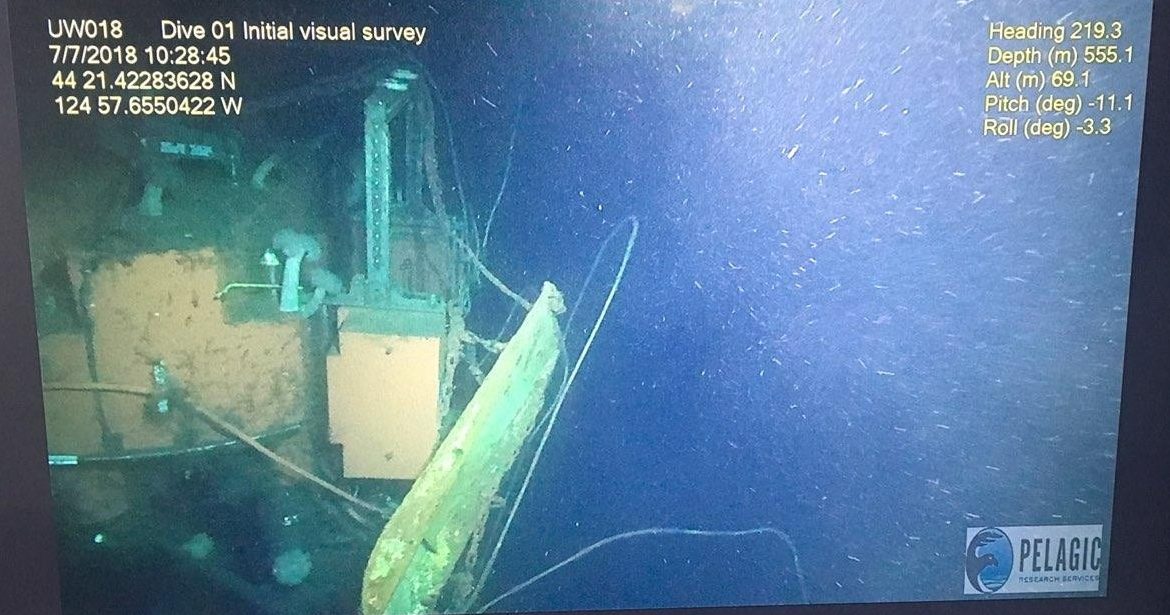
On July 7th the RV Bold Horizon, using a small Remote Operated Vehicle (ROV), successfully recovered fishing gear and the sub-surface platform the gear was fouled on. The science platform, part of the Ocean Observatories Initiative, was struck by trawl gear on September 16, 2017, disabling the platform and the shallow-water profiler that was onboard. Pelagic Research Services, which was contracted to recover the platform and gear, found the platform and a trawl door about 38 fms off the bottom in 304 fms of water. OFCC Board member and fisherman Gary Wintersteen assisted with the recovery. Photos courtesy of Gary Wintersteen. More photos and video are available on the OFCC Facebook page.
Visions 18 Cruise Underway
On June 19th, the R/V Roger Revelle departed Newport, OR to begin VISIONS’18, a 47-day expedition to replace and maintain elements of the Cabled Array off the coasts of Oregon and Washington as well as to add some novel sensors.
Read More2018 OOI Data Workshops – Apply Now
The OOI is hosting several workshops for early-career scientists (PhD candidates, postdocs and pre-tenure faculty up to 7 years post-PhD) interested in learning more about the OOI and how to use data from the program in their work.
Read More
